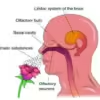END OF SEASON SALE UPTO 50% OFF
Fragrances are made up of three distinct layers: top, middle, and base notes. These notes are key when discovering a perfect scent. You might have observed, just as music is composed of different notes which work together to create a masterpiece, the three classes of perfume notes combine in harmony to create a redolent final scent.
When first understanding fragrance notes, swap the word notes for ingredients and you’ll soon begin to grasp the importance each note holds in creating a well-rounded perfume.
Top notes are the scent which is first noticed on application, middle notes make up the main portion of the perfume and will be apparent just before the top note fades, while base notes create the final, lingering scent of the fragrance and will be detected when the top note has evaporated completely.
Notes are also vital when understanding the longevity of scents. The particular longevity of a fragrance comes down to a number of variables. For instance, if a perfume has a base note you particularly like, that’s the scent that will last the longest. However, top notes tend to fade quickly so don’t be drawn in by their fragrances alone.
Let’s consider fragrance notes as making up an olfactory pyramid with base notes forming the base of the pyramid.
These notes create the foundation of the fragrance, so they need to be strong and long-lasting. The middle of the pyramid consists of the middle or heart notes and makes up the majority of the fragrance.
Top notes—or opening notes—form the top of the pyramid and are the smallest section.
All three sections of the pyramid or notes of the fragrance work together to create a robust, long-lasting structure.
Top Notes
Top notes, sometimes called opening notes, are the initial scents you notice when you apply a perfume.
While they aren’t the most enduring, they’re the first impression you’ll get of a scent, so they’re extremely important.
Common top notes are from the citrus, fruit, or fresh herb families and consist of small molecules that tend to evaporate quickly—typically within 15 minutes.
Middle or Heart Notes
As the top notes fade, the middle notes come into play.
These notes form the main body of the perfume and provide depth to the fragrance. Middle notes last approximately 20-60 minutes.
Examples of middle notes include lavender, rose, and other floral scents, as well as herbal aromas like clary sage and cardamom.
Base Notes
Base notes are the foundation of the fragrance – they provide stability and leave a lasting impression.
They comprise between 10-15% of the final fragrance and can be noticed once the top notes have completely evaporated. This is known as the dry down period.
They are deep, enduring scents that linger on the skin for up to 6 hours.
These notes have a heavy molecular structure, making them less volatile.
Examples of base notes include sandalwood, vanilla, and myrrh.
In summary, top notes are the initial burst of fragrance, middle notes add complexity, and base notes create a lasting trail. Together, they form a harmonious aromatic symphony in perfumes.





